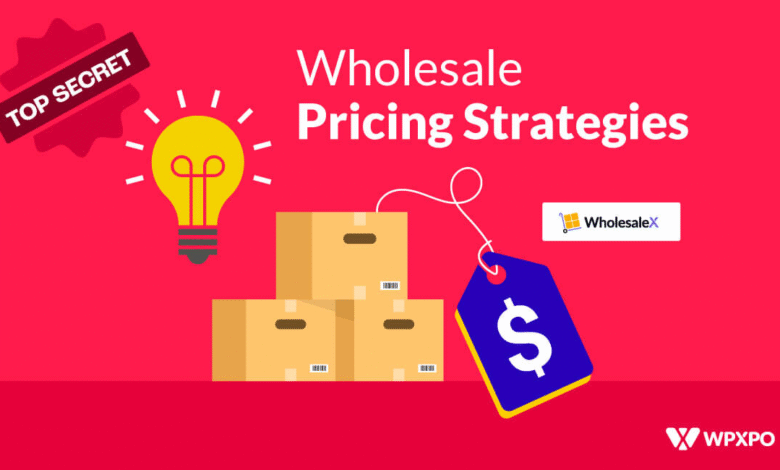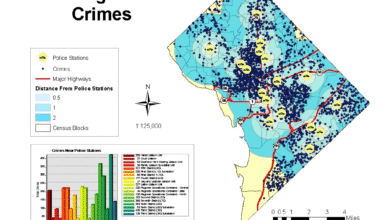Wholesale Prices Increase: July Report Shows Surprising Rise

Wholesale prices increase significantly, as evidenced by the recent report from the Bureau of Labor Statistics, which revealed a 0.9% rise in July, far exceeding the Dow Jones estimate of 0.2%. This unexpected surge marks the highest monthly increase since June 2022, raising concerns about ongoing inflation impact on the economy. The core Producer Price Index (PPI) also showed a robust 0.9% uptick, surpassing expectations and indicating mounting pricing pressures. With the annual PPI now at 3.3%, this considerable jump is well above the Federal Reserve’s inflation target, suggesting that inflationary forces continue to permeate various sectors. This economic analysis highlights an urgent need for understanding the underlying contributors to rising wholesale costs, especially for businesses and consumers alike.
The recent surge in wholesale price levels underscores a notable shift in economic conditions, with significant implications for market dynamics and consumer behavior. Notably, the metrics captured in the Producer Price Index (PPI), as outlined in the July report, indicate an upward trend that goes beyond traditional expectations. This increase, attributed in part to services inflation, raises critical questions about the broader effects on consumer costs and economic stability. As the inflation dialogue continues, stakeholders must consider how changes in wholesale pricing could influence retail prices in the near future. Therefore, keeping an eye on these economic indicators is essential for understanding the trajectory of inflation and its impact on the overall market.
Understanding the Impact of Wholesale Prices Increase
Wholesale prices have seen a significant uptick recently, with a notable increase of 0.9% in July. This rise far exceeded expectations set by analysts, highlighting persistent inflationary pressures in the economy. The increased costs directly reflect the dynamics seen in the Producer Price Index (PPI), which serves as a critical barometer of wholesale pricing trends. The Bureau of Labor Statistics, which tracks these metrics, reported this jump as the largest monthly increase since June 2022, prompting economic analysts to reassess their forecasts for future inflation.
Moreover, the core PPI—which excludes volatile categories like food and energy—also rose by 0.9%, indicating that inflationary forces are broad-based and not confined to just essential commodities. The recent trends observed in the PPI could signal impending increases in consumer prices as businesses may eventually pass on these costs to consumers. An in-depth economic analysis reveals how significant the inflation impact has been, especially in services, which hold considerable sway over the overall market landscape.
Analyzing the Producer Price Index (PPI) July Report
The PPI July report has drawn considerable attention, particularly due to the unexpected increase in the index that surpassed previous estimates. A 3.3% increase in the headline PPI on an annual basis marks the most substantial rise since February. This jump not only brings inflation concerns to the forefront but also positions the PPI as a pivotal dataset for understanding economic conditions. The Federal Reserve’s inflation target of 2% is now under scrutiny as the discrepancy widens, pushing analysts to predict potential policy shifts.
Additionally, the core PPI’s rise indicates broader inflationary trends impacting various sectors within the economy. As consumer prices are typically influenced by production costs, this upward movement in wholesale pricing suggests that producers are likely to adjust their pricing strategies moving forward—either amplifying consumer pricing or attempting to absorb costs until market conditions stabilize further. Evaluating such dynamics through the lens of the Bureau of Labor Statistics offers a crucial perspective on future economic scenarios and adjustments in fiscal policies.
The Effects of Inflation on Economic Conditions
Inflation has emerged as a central theme in recent economic discussions, significantly impacting market sentiments and consumer behaviors. The PPI dynamics indicate that sectors such as services are experiencing inflation levels not seen in several months, with notable increases contributing to a broader discussion on economic health. The rise in trade margins, coupled with service pricing pressures, suggests that the economy is grappling with persistent inflation that could challenge the Federal Reserve’s current monetary policy.
Furthermore, the complexities surrounding inflation indicate that businesses are navigating a tightrope; while they face increasing costs, they are also concerned about consumer demand and pricing power. If inflation continues its trajectory upward, consumers may soon feel the pinch as businesses begin passing these costs along. This transition could have far-reaching effects on economic analysis and the strategies employed by policymakers, ultimately influencing decisions on interest rates and overall fiscal strategies to mitigate inflationary pressures.
Market Reactions to the PPI Increase
In response to the unexpected PPI increase, market reactions have been swift and noticeable. A drop in stock market futures reveals investor concerns about rising costs potentially impacting company profit margins and consumer spending. As inflation pressures build, traders are increasingly adopting a cautious stance, closely monitoring economic indicators such as the Producer Price Index for signs of future trends. The PPI is essential for gauging the health of the economy and informing stock market movements.
Moreover, the increase in shorter-duration Treasury yields suggests a shifting landscape where investors are expecting rate hikes in the face of rising inflation. This reaction demonstrates market participants’ apprehension regarding long-term economic stability amid inflationary trends. The dynamics observed in this scenario highlight how closely intertwined wholesale pricing impacts can reverberate through various financial markets, further complicating economic forecasting and trading strategies.
Government Insights and Policy Implications
The White House’s take on the recent PPI report underscores a crucial perspective regarding business operations in the context of rising tariffs and associated costs. Their emphasis on the notion that businesses are not currently passing tariff costs onto consumers suggests a complex relationship between production costs and consumer pricing. Such insights are vital for economists and policymakers as they navigate the treacherous waters of inflation and economic recovery.
With recent criticisms surrounding the Bureau of Labor Statistics’ data accuracy, particularly following personnel changes within its leadership, there is growing concern over the reliability of inflation data. These debates can lead to potential ramifications for future economic policy decisions. An informed understanding of these factors is critical; as inflation remains a key concern in economic analyses, the interplay between governmental policies and market responses will continually shape the economic landscape in the coming months.
The Role of Economic Analysis in Inflation Tracking
Economic analysis plays an indispensable role in tracking inflationary trends and understanding broader market behaviors. By leveraging data such as that derived from the PPI, analysts can formulate enlightened assessments on how price changes impact consumer behavior, purchasing power, and overall economic viability. The increase reported in July has various implications, urging economists to reassess their forecasts and adapt their models to accommodate shifting inflation dynamics.
Furthermore, inflation metrics like the PPI inform critical monetary policy decisions by the Federal Reserve. As market conditions evolve, relying on robust economic analysis helps ensure that policymakers are equipped with accurate data to support wise decision-making. The ongoing scrutiny of inflation indicators will be paramount in guiding future policy directions, especially as the economy confronts the challenges posed by external factors such as tariffs and international trade dynamics.
Consumer Behavior and Future Price Trends
As inflationary pressures mount, understanding consumer behavior in response to increasing wholesale prices becomes essential. The PPI report indicates that businesses face rising costs, which could compel them to raise prices for consumers sooner than anticipated. As prices increase, consumer spending behavior is likely to adapt, potentially stifling demand for goods and services if people perceive affordability constraints amid inflationary pressures.
Moreover, the interconnection between consumer perceptions and inflation cannot be overstated. Increasing prices may lead consumers to change their purchasing habits, opting for budget-friendly alternatives. This shift could, in turn, shape market strategies as businesses pivot towards more consumer-focused approaches in response to evolving demands driven by inflation trends tracked through the PPI and other indices.
Future Projections of the PPI and Economic Stability
As we look towards the future, projections for the PPI remain a significant focus for economists and market analysts alike. With recent data suggesting sustained inflationary pressures, forecasts indicate a probability of continued increases in wholesale prices. This could have profound implications for the overall stability of the economy, influencing everything from consumer prices to monetary policy decisions by the Federal Reserve.
Moreover, as external factors such as geopolitical tensions and tariff policies come into play, the PPI will serve as an essential tool for monitoring the evolving economic landscape. Analysts will need to stay attuned to changes in the PPI and integrate this insight into their economic evaluations and forecasts, ensuring that they remain proactive in addressing potential inflationary challenges that could emerge in the coming months.
Impacts on Interest Rate Decisions by the Federal Reserve
The recent uptick in the PPI has raised pivotal questions concerning future interest rate decisions by the Federal Reserve. As inflation surpasses the desired target rate, Federal Reserve officials face increasing pressure to adjust monetary policies. Interest rates will play a critical role in controlling inflation; hence, economists are closely monitoring the PPI as they assess the potential need for rate adjustments or interventions to curb inflationary trends.
Any shift in interest rates can have significant ramifications for overall economic activity, impacting everything from mortgage rates to business loans and consumer credit. Consequently, understanding the correlation between the PPI and Fed interest rate policy will be vital for stakeholders looking to navigate the complexities of an evolving economic environment defined by fluctuating inflation and unpredictable market behaviors.
Frequently Asked Questions
How does the July PPI report indicate a Wholesale Prices Increase?
The July Producer Price Index (PPI) report revealed a significant wholesale prices increase of 0.9%, exceeding analyst expectations of only a 0.2% rise. This was the largest monthly increase since June 2022, driven by inflation across various sectors.
What factors contributed to the Wholesale Prices Increase reported in July?
The Wholesale Prices Increase in July was primarily influenced by a 1.1% surge in service prices and a 2% rise in trade services margins. These elements reflect ongoing inflationary pressures that could affect future pricing strategies for businesses.
What role does the Bureau of Labor Statistics play in measuring Wholesale Prices Increase?
The Bureau of Labor Statistics (BLS) is responsible for compiling and reporting the Producer Price Index (PPI), which measures wholesale prices increase. Their reports provide crucial insights into inflation trends and economic pressures affecting various industries.
How does the Producer Price Index (PPI) relate to inflation impacts on wholesale prices?
The Producer Price Index (PPI) is specifically designed to track changes in wholesale prices, directly reflecting inflation impacts on goods and services. A rising PPI signals increasing costs for producers, which may eventually lead to higher prices for consumers.
What does the core PPI indicate about future Wholesale Prices Increase trends?
The core PPI, which excludes food and energy, showed a 0.9% increase, suggesting that inflation pressures are persistent beyond volatile categories. This trend raises concerns about future Wholesale Prices Increase, as businesses might pass on these costs to consumers.
How might the recent Wholesale Prices Increase influence consumer pricing?
The recent Wholesale Prices Increase, particularly the 3.3% rise in the PPI on an annual basis, suggests that businesses may soon pass increased costs onto consumers, depending on the ongoing inflationary environment and production costs.
What is the significance of the July report for economic analysis of wholesale pricing?
The July PPI report is significant for economic analysis as it indicates robust wholesale pricing pressures, suggesting potential shifts in economic policy and prompting scrutiny of consumer price trends in response to rising wholesale prices.
How does the July PPI data affect Fed policy on interest rates regarding Wholesale Prices Increase?
The strong July PPI data, reflecting a Wholesale Prices Increase, suggests the Federal Reserve may consider maintaining or adjusting interest rates to combat inflation pressures, despite contrasting signs from consumer price indexes.
What criticisms have been directed at the Bureau of Labor Statistics regarding the PPI data on Wholesale Prices Increase?
Critics have raised concerns about the accuracy of the BLS PPI data following leadership changes and budget cuts that may impact data collection efforts, which in turn could affect insights on Wholesale Prices Increase.
Why is the Producer Price Index (PPI) crucial for understanding wholesale pricing strategies?
The Producer Price Index (PPI) is vital for understanding wholesale pricing strategies as it reveals underlying price trends businesses face, helping them make informed decisions and anticipate consumer pricing changes.
| Key Point | Details |
|---|---|
| Wholesale Prices Increase | Wholesale prices rose by 0.9% in July, surpassing the Dow Jones estimate of a 0.2% gain. |
| Core Producer Price Index (PPI) | Core PPI also increased by 0.9%, exceeding expectations of a 0.3% rise. |
| 12-Month Headline PPI Increase | The PPI rose by 3.3% year-over-year, above the Federal Reserve’s 2% inflation target. |
| Service Sector Inflation | Inflation in the services sector rose by 1.1%, indicating strong inflationary pressures. |
| Impact on Market | Stock market futures dropped while shorter-duration Treasury yields rose following the report. |
| Tariff Influence | Businesses may be absorbing tariff costs instead of passing them to consumers, suggesting future price increases. |
| BLS Data Concerns | There are criticisms regarding BLS data accuracy, influenced by recent leadership changes and budget cuts. |
| Future Fed Policy | Persistent inflation may affect future decisions regarding interest rate cuts by the Fed, contrasting with stable CPI figures. |
Summary
Wholesale prices increase has become a pressing concern as illustrated by the latest Bureau of Labor Statistics report, indicating a significant 0.9% rise in July, much higher than anticipated. The core PPI’s ascent signals robust inflationary trends, which complicate future economic forecasting and could affect Federal Reserve strategies around interest rates.




